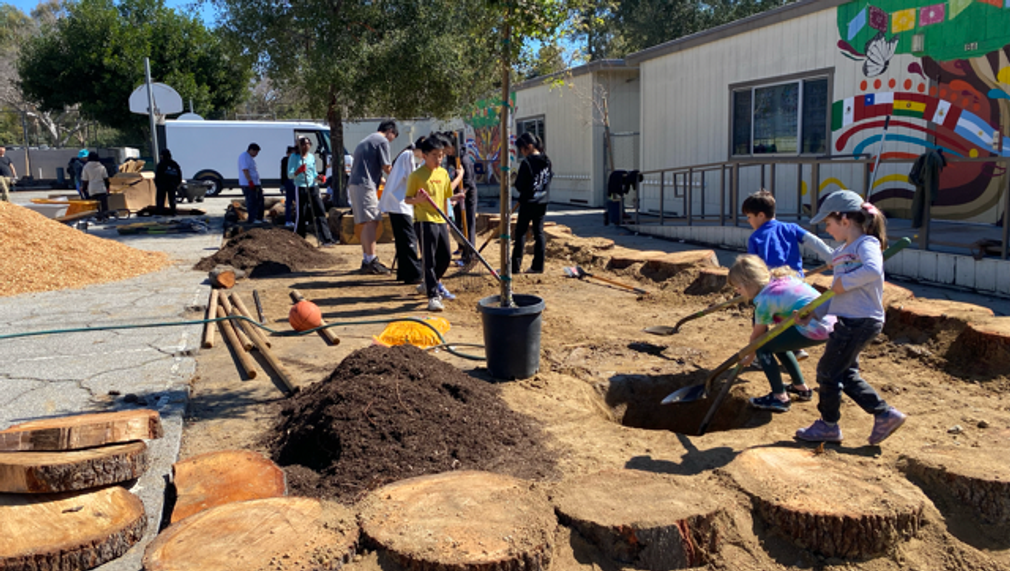SGV Rain Gardens
SGV Rain Gardens is focused on creating water-saving rain gardens with CA native trees and plants in one of the most pollution-burdened, habitat-scarce communities in California, the City of El Monte. The project area is located within a native habitat desert, where few properties incorporate native plantings.

What is the primary issue area that your application will impact?
Green space, park access, and trees
In which areas of Los Angeles will you be directly working?
San Gabriel Valley
In what stage of innovation is this project, program, or initiative?
Pilot or new project, program, or initiative (testing or implementing a new idea)
What is your understanding of the issue that you are seeking to address?
Unlike in many more affluent communities in the San Gabriel Valley, native plant rain gardens are few and far between within the region’s highest-need, most pollution-burdened communities. The focus area is already disproportionately impacted by increased extreme heat and rain, and worsening air pollution. Rain gardens reduce the pollutant load of runoff from impervious surfaces like parking lots, roofs, and walkways; capture and clean stormwater; reduce ambient temperature; and clean polluted air. This strategy will directly benefit pollution-burdened neighborhoods, mitigating watershed pollution, reducing demand for energy-intensive and scarce imported water (in this area largely from the Colorado River), and providing cooling and biodiversity benefits. Participating households will also save on landscape watering costs associated with turf replacement.
Describe the project, program, or initiative this grant will support to address the issue.
The project is designed to plant native seeds of change in the central SGV, expanding the green belt of the Emerald Necklace into the adjacent neighborhoods. Project funding will cover staff time to transform highly-visible, water intensive yards into native rain gardens, building community expertise and understanding about CA natives, DIY green infrastructure, and wildlife conservation. Each chosen applicant will get an individualized design that accounts for their unique inputs such as slope, exposure and soil quality. Gardens will be planted with a minimum of 70% local native species to provide suitable habitat for wildlife. Project funding will allow for staff supported site care through garden establishment.
Public tours will increase awareness of this nature-based strategy to reduce pollution, mitigate extreme weather flooding risk, conserve water and finances, and support biodiversity. The general public will also be invited to support project implementation via volunteer days designed to educate, inform, and empower residents how to construct a rain garden. These volunteer events will educate participants about the benefits of nature-based strategies that integrate native plantings with relatively low cost stormwater capture methods.
LA 2050 support will be leveraged with in-kind resources, including work tools, supplies, and a zero-emission, all-electric work van.
Describe how Los Angeles County will be different if your work is successful.
Adoption of DIY stormwater capture should be accelerated in high-need, east Los Angeles County neighborhoods with more limited awareness of, and exposure to, such green infrastructure.
Approximately how many people will be impacted by this project, program, or initiative?
Direct Impact: 500
Indirect Impact: 12,500